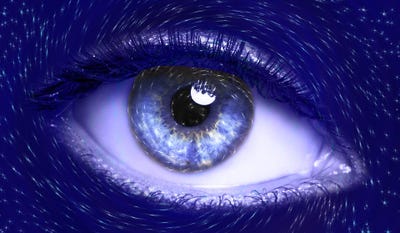How Algae Might Help the Blind Be Able to See
February 23, 2016
The burgeoning field of optogenetics, which merges optical stimulation with genetic engineering, is one of the hottest research areas in neuroscience research and for good reason: it enables scientist to control neurons with light. Now, researchers are working on using optogenetics to help the blind gain some degree of vision.
Brian Buntz
The startup RetroSense Therapeutics (Ann Arbor, MI) is planning on conducting the first human test of optogentics on a legally blind patient. In the experiment, scientists at the company plan on injecting viruses carrying DNA for photosensitive algae into the patient's eyes with the hope that the genetic material could restore some degree of vision in the patients.
The strain of algae used in the research, known as channelrhodopsin, is capable of moving in response to light. Researchers have succeeded in creating transgenic animals sharing the algae gene, enabling them to remote control regions of neurons of the animals' brain.
Because the protein in the algae is only sensitive to a single color--blue light--patients treated with the gene from the algae could have monochromatic vision.
The gene-therapy experiment is backed by the support of the Retina Foundation of the Southwest. Eventually, up to 15 patients with retinitis pigmentosa could take part in the study. The condition retinitis pigmentosa is caused when photoreceptors in the eyes die, potentially rendering the patient blind. There is little that can be done to treat the disease, although vitamin A and the use of sunglasses to block ultraviolet light can slow its progression.
Enter optogenetics. A radical treatment alternative, the optogenetic treatment will seek to fundamentally change the DNA of cells in the retina known as ganglion cells to make them light sensitive again. If the treatment works, RetroSense anticipates that the patients will only be able to see coarse environmental features to help patients better navigate. The technology could potentially enable them to see objects such as tables and chairs in a room and, possibly, would be able to read large letters.
The company has already seen promising results in vision restoration in animal studies on mice and monkeys.
The 2011 video below shows MIT's work to restore vision to blind mice.
If the study is successful, it could help inspire a second wave of optogenetics research on humans for conditions such as Parkinson's and depression. The technology could potentially help relieve chronic pain as well.
The company RetroSense was founded in 2009 to help leverage optogenetics breakthroughs in the eye. The technology is well suited to this application as the eye is transparent and sensitive to light.
Other applications of optogenetics include the use of the technology to selectively activate and deactivate neurons in the brain to alter mice behavior. Scientists have used optogenetics to help numb the sensation of pain in mice and to even reshape their memories of fearful events.
Learn more about medical applications of cutting-edge technologies at BIOMEDevice Boston, April 13-14, 2016. |
About the Author(s)
You May Also Like

.png?width=300&auto=webp&quality=80&disable=upscale)
